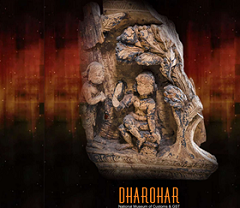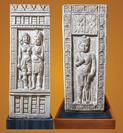Dharohar – National Museum of Customs and GST
- 13 Jun 2022
As part of the Azadi Ka Amrit Mahotsav Iconic week of the Ministry of Finance, Union Finance Minister Nirmala Sitharaman on 11th June, 2022 dedicated to the nation, Dharohar - the National Museum of Customs and GST in Goa.

- It is the first museum of its kind in India, show casing the rich history of the Department of Customs and Indirect Taxes.
- The Central Board of Indirect Taxes and Customs decided to set up the Customs and GST Museum at the heritage Customs building, popularly known as Blue Building, in Goa on the banks of the Mandovi River.
- The heritage two‑storeyed building is of particular interest to the Customs department as the root of the word Mandovi comes from the Arabic word 'mand' for tax.
- The two-storey building, which was earlier known as Alfandega during Portuguese rule, is 400 years old.
Dharohar is one of its kind museums in the country that showcases not only the artefacts seized by Indian Customs but also depicts various aspects of work performed by the Customs Department while safeguarding the economic frontiers of the country, its heritage, flora and fauna and the society.
The museum houses eight galleries: Introductory gallery, History of Taxation Gallery, Guardians of our economic frontiers gallery, Guardians of our Art & Heritage, Guardians of Flora & Fauna, Custodians of our social well-being, Journey of Indirect taxes –Salt Tax to GST and the GST gallery.
- Further, the tour de force of the museum is a unique ‘Battle of Wits’ gallery which showcases the cerebral battle between the smugglers and the Customs officers. It contains chronicled seizures of antique coins, statues, endangered wildlife, weapons and narcotics.
- It also displays the manuscript of Ain-i-Akbari intercepted by the Indian Customs at the Indo-Nepal border at Raxaul, replica of Amin pillars from Kaurkshetra, medieval period astronomical instruments, seized metal and stone artefacts, ivory items and wildlife items.
| Amin Pillars
(Replicas at Dharohar)
|
Dharohar Museum’s GST Gallery
This is a brand-new addition to the Dharohar Museum. A first of its kind initiative in the country, the GST Gallery shows the long and arduous journey to GST spanning two decades. Beginning with the Atal Behari Vajpayee Government initiating discussions on GST in 2000, the Gallery chronicles various stages and processes that paved the way for introduction of reformed unified indirect taxation in the form of GST on July 1, 2017.





